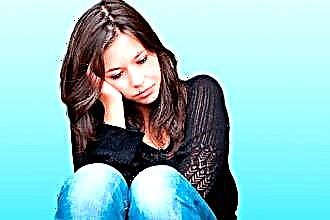 How to deal with the problem? Treatment of infectious laryngitis in babies should be aimed not only at relieving symptoms, but also at eliminating the causes of the development of the disease. Young children suffer from laryngitis 4 times more often than adults.
How to deal with the problem? Treatment of infectious laryngitis in babies should be aimed not only at relieving symptoms, but also at eliminating the causes of the development of the disease. Young children suffer from laryngitis 4 times more often than adults.
According to Komarovsky, this is due to the underdevelopment of the immune system and, accordingly, insufficient resistance of the body to infections. To prevent the recurrence of ENT diseases, it is advisable from time to time to give children vitamin-mineral complexes and phytopreparations that have an immunostimulating effect.
About the disease
A small child is more difficult to tolerate laryngitis than an adult because of the anatomical features of the structure of the respiratory tract. In children, the larynx looks like a tube tapering downward, so even a slight swelling of the mucous membrane causes respiratory failure. In addition, laryngitis often occurs as a complication of childhood infectious diseases - measles, scarlet fever, rubella, whooping cough, etc.
In itself, it is not dangerous, but if left untreated, it causes the child to suffocate and even to completely stop breathing.
Stenosing phenomena in the larynx arise as a result of an allergic reaction of the child's body to the influence of toxic substances that secrete pathogenic viruses or bacteria. Therefore, at the very first manifestations of a respiratory disease, you need to make an appointment with a pediatrician.
How to properly treat laryngitis? Dr. Komarovsky notes that often laryngitis is provoked by viruses, not microbes, therefore, in 96% of cases, it is necessary to be treated not with antibiotics, but with antiviral agents. To reduce the severity of allergic manifestations, be sure to give children antihistamines. The third generation drugs are considered the safest, they practically do not cause side effects, therefore they can be used in the treatment of children under the age of 1 year.
Doctor's recommendations
Symptoms of inflammation of the larynx are most pronounced not in the daytime, but precisely at night. In children, the temperature rises, there are attacks of spastic cough, lacrimation and shortness of breath. To speed up recovery and prevent the development of false croup, you must strictly follow the recommendations for caring for a sick child:
- it is necessary to maintain a special microclimate in the room with a temperature of no more than 19-21 ° C and an air humidity of at least 50%;
- it is advisable to provide the child with an abundant alkaline drink for at least 5-7 days;
- you should limit the consumption of hot, salty and spicy foods for a week;
- twice a day you need to ventilate the room and carry out wet cleaning;
- in the acute course of the disease with a high fever, the child must comply with bed rest.
 Hoarseness of the voice is a clear sign of inflammation of the vocal cords. Their overexertion can cause the development of persistent voice disorders. To prevent complications, you need to ensure that the child maintains vocal peace for at least 3-4 days.
Hoarseness of the voice is a clear sign of inflammation of the vocal cords. Their overexertion can cause the development of persistent voice disorders. To prevent complications, you need to ensure that the child maintains vocal peace for at least 3-4 days.
Even whispering with inflammation of the vocal cords can lead to the development of dysphonia (vocal disorders).
Pharmacy products
What should be the treatment for laryngitis in children? Komarovsky claims that it is impossible to completely cure a child with the help of folk remedies, "herbs" and warm drinks. Surely you can get rid of a respiratory disease only by taking medications. Drugs of etiotropic action (antibiotics, antiviral agents) are aimed at destroying pathogenic flora, and symptomatic ones - at stopping the manifestations of the disease. When treating laryngitis in children, the following types of medicines are usually used:
| Medication type | Name | Operating principle |
|---|---|---|
| antivirus |
| reduce the number of viruses in the body and increase non-specific immunity |
| antimicrobial |
| destroy microbial flora in the respiratory organs and purulent inflammation in the larynx |
| antitussives |
| stop spastic cough |
| antipyretics (antipyretic) |
| eliminate fever, fever and chills |
| antihistamines |
| relieve swelling and inflammation from the mucous membranes of the ENT organs |
| expectorant |
| convert an unproductive cough into a wet cough |
E.O. Komarovsky does not recommend giving expectorants to children under 2 years of age, since a small child is not able to effectively cough up phlegm.
When treating infants, it is best to use medicines in the form of syrups, drops and rectal suppositories. The latter do not irritate the gastric mucosa, therefore they do not cause unwanted side reactions in babies - heartburn, flatulence, diarrhea, etc.
Foot bath
Foot baths are one of the fastest and most effective ways to reduce swelling in the respiratory system. During the procedure, the blood vessels dilate, thereby accelerating blood circulation and the outflow of lymph from the lesions. According to E.O. Komarovsky, foot baths can be used during attacks of suffocation in a child. By reducing swelling in the respiratory tract, the patency of the larynx is normalized, as a result of which the child's breathing is facilitated.
How to float your feet correctly? To enhance the therapeutic effect of foot baths, a small amount of dry mustard can be added to the water. In this case, during the procedure, you need to pay attention to the following points:
- collect water in a basin with a temperature of no more than 40 ° C;
- dissolve in water 2 tbsp. l. dry mustard;
- dip your child's feet into ankle-deep water;
- after 10 minutes, rinse your feet with clean water;
- put on warm socks on your feet.
You can not use mustard in the presence of scratches and wounds on the skin, as well as dermatoses and eczema.
As an alternative to mustard trays, you can use decoctions from medicinal plants. Thyme, oak bark, calendula and St. John's wort have a pronounced anti-inflammatory effect. The vapors will help reduce swelling in the nasopharynx and make breathing much easier if you have nasal congestion or a runny nose.
Gargling
 Gargling is the most effective way to combat disease-causing flora in the respiratory system. Herbal, soda, and saline solutions can be used to irrigate the mucous membranes of the mouth and throat. The concentration of drugs depends on the severity of inflammation in the ENT organs, the age of the child and his tendency to allergic reactions.
Gargling is the most effective way to combat disease-causing flora in the respiratory system. Herbal, soda, and saline solutions can be used to irrigate the mucous membranes of the mouth and throat. The concentration of drugs depends on the severity of inflammation in the ENT organs, the age of the child and his tendency to allergic reactions.
Children over 3 years old can already rinse their throats on their own. The procedure is rather unpleasant, so little patients are reluctant to agree to it. However, it is rinsing that allows you to eliminate inflammation in the larynx in the shortest possible time.
If the solution is prepared at home, then in order to achieve the best therapeutic result, it is advisable to use:
- chamomile;
- oregano;
- peppermint;
- thyme;
- St. John's wort;
- calendula.
During the preparation of the broth, you need to pour 1 tbsp. raw materials 250 ml of water and boil over low heat for 3-4 minutes.
With a strained broth, you need to rinse your sore throat at least 4 times a day for a week. How to carry out the procedure?
- the child should take a sufficient amount of solution into his mouth and tilt his head back;
- to prevent the penetration of liquid into the windpipe, when rinsing, you need to pronounce the sound "s-s-s";
- for 1 procedure, you must use at least 150 ml of the medicinal solution;
- during the period of exacerbation of the disease, rinsing should be done every 2-3 hours;
- after the procedure, you must not eat or drink for 30-40 minutes.
If the child is already 3-4 years old, then Miramistin, Furacilin or Chlorophyllipt can be used as preparations for irrigating the mucous throat. It is not scary if the child swallows a small amount of the drug while rinsing. However, one should not forget about possible allergic reactions to the action of certain pharmaceutical agents.
At the first rinse, Komarovsky advises to slightly dilute the medicine with boiled water or saline



